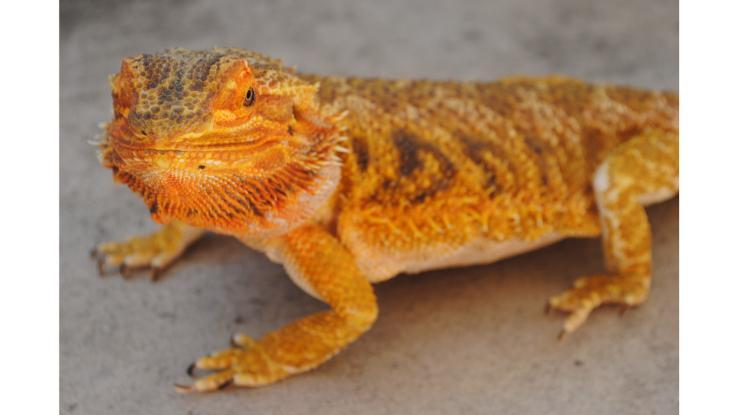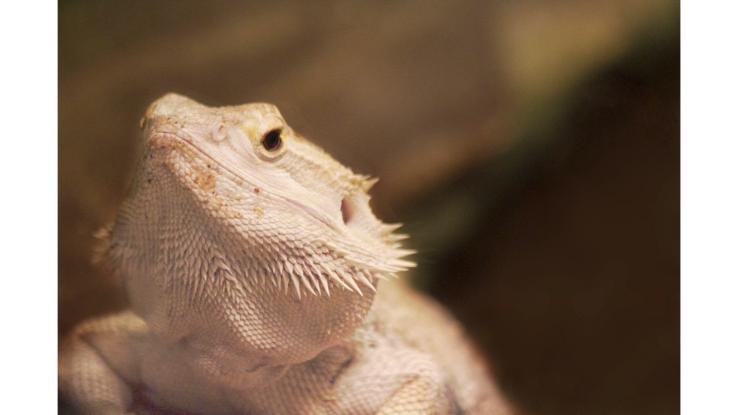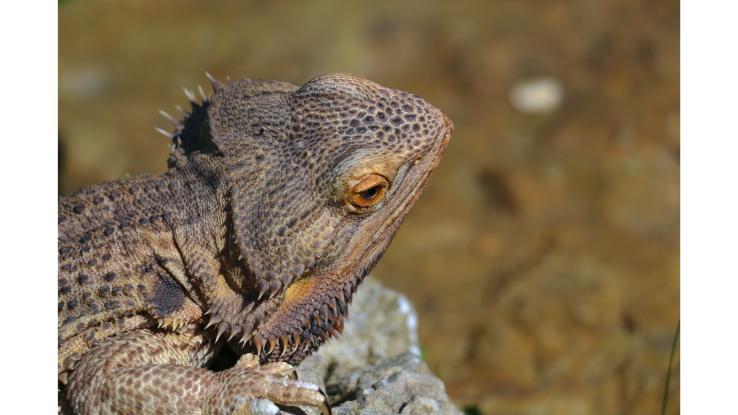How to Feed a Bearded Dragon Plums
Bearded dragons are some of the most popular pet lizards available today. They have unique personalities, fairly easy care requirements, and are widely available thanks to captive breeding. If you're looking for your next reptilian pet, a bearded dragon may be next on your list.
If you are considering a bearded dragon, it's important to take into consideration what you're willing to spend, as well as what you want your new pet to look like. Bearded dragons are available in a number of different colors and patterns. These variations are called morphs, and when shopping for a bearded dragon, you'll find many options.
What Is a Morph?
When applying the term morph to reptiles, it means that the reptile being described displays a different coloration or pattern than what is seen in the wild. Some of the most common colors for morphs are albino, black, and hypo (also known as ghost morphs). The more popular patterns are stripes, banded, and also patternless.
For some morphs, it has taken years, or even decades, of selective breeding to achieve the desired colors or patterns. Some morphs in captive-bred reptiles have hit a point where they're commonly available, while others are still a rarity, increasing the cost of the reptile to a very high point.
Common Reptile Morph Terms
If you're considering a bearded dragon morph, it's important to know what some of the terms related to reptile morphs mean before fully diving in.
- Amelanistic – Referring to a lack of pigmentation, also known as albinism
- Anerythristic – An animal that lacks red pigment specifically
- Axanthic – An animal that is lacking yellow or orange pigment
- Leucistic – Referring to an animal that is pure white
- Hypomelanistic – Term meaning that there is a lack of pigment, resulting in a ghost-like look in the scales
- Melanistic – Unusually dark pigment for a specimen, resulting in black or near black coloration
These are the most commonly used terms. Some descriptions of morphs will lack these terms entirely, referring specifically to the animal's appearance rather than the traits behind the result.
Bearded Dragon Morphs
Bearded dragons are native to Australia. In total, there are eight different species of bearded dragons that are commonly available for purchase as pets. Each one of these species comes from a different habitat, and as such, has a different average size, appearance, and set of habits.
The most common species is pogona vitticeps, which has a very docile nature, making it ideal for captive breeding and keeping. This species of a bearded dragon is typically yellow or red in appearance, while other species can be gray, tan, or brown as well.
Through selective breeding, many different bearded dragon morphs have been created, each with unique colors, patterns, or scalation, and some that are a combination of two or more of these unique traits.
1. Red Bearded Dragon Morphs

Red bearded dragon morphs are some of the most commonly available and are some of the oldest known bearded dragon morphs. They were originally bred in the 1990s after bearded dragons first became commonly available. Normal bearded dragons have spots or flecks of red in their skin, but red bearded dragons are entirely red, as the name implies.
Some of the red morphs available are striped with red or are a darker brown with shades of red. There are also entirely red specimens in a deeper shade, known as ruby red bearded dragons. Ruby reds are very highly sought after and are fairly expensive compared to most other morphs.
2. Leatherback Bearded Dragons
Leatherback bearded dragons are a combination of color and scalation morphs, resulting in very unique specimens. Leatherbacks have no spikes on their backs, like a regular bearded dragon. They still have spikes on their sides and heads, typically. Because they have no scales, the patterns on their backs are more easily seen, making them appear to be more vivid.
There is a controversy involved with leatherback bearded dragon morphs, however. There are specific morphs called "silkies" that have been bred to a point where they have no scales. Due to this change in their skin, they have a hard time regulating their body heat. At this point in time, there is a movement to have them removed from the market altogether due to their immense health problems.
3. Translucent Bearded Dragons
Translucent bearded dragons are named as such due to the nearly see-through spikes and scales on their bodies. This look makes the bearded dragon look somewhat ghostly, and young examples have nearly clear bellies. Translucent morphs are commonly hypomelanistic as well, meaning that in addition to the clear spikes and scales, they have less colorful pigments across their entire bodies.
4. Dunner Morph Bearded Dragons
Dunner morphs are named after the breeder that created them. Dunner morphs are an excellent example of a change in the bearded dragon's typical pattern. While a normal bearded dragon has stripes that are fairly symmetrical, Dunner bearded dragons have markings that have nearly no discernible pattern to them. Their markings can be spotted or striped, and they tend to have more scales than other bearded dragons.
5. Orange Bearded Dragon Morphs
When breeding bearded dragons, the combination of red and yellow bearded dragon morphs results in orange bearded dragon morphs. According to many reptile keepers, these are some of the most beautiful morphs available and often are expensive depending on the type of orange morph. As the name implied, these bearded dragons are mostly orange, with different patterns and colorations depending on the unique morph.
The three most common orange morphs available are:
- Orange – Normally a patternless, solid-colored bearded dragon, less expensive than other orange morphs
- Tangerine – A mostly orange bearded dragon with hints of yellow, pink, and lime in the patterns found on them
- Sandfire – Have a tan or brown base with bright orange, yellow, and red patterns resembling fire
6. Genetic Stripe Bearded Dragons
The genetic stripe morph still has stripes on its back, but rather than in bands, they have them in racing stripes that run the length of the lizard's back. Otherwise, these bearded dragons look relatively similar to their normal counterparts, being mostly grey, brown, and tan in coloration.
7. Witblit Bearded Dragons

Originating in South Africa, the witblit name actually translates to "white lightning," which is something of a misnomer. The bearded dragon itself is patternless and normally a solid dull color. These bearded dragons are never actually white, but more realistically, are found in light greys or neutral earth tones.
They have no distinctive markings whatsoever. They're one of three leucistic bearded dragon morphs, making them highly sought after and expensive due to their rarity.
8. Zero Morph Bearded Dragons
Another of the leucistic bearded dragons, zeros, are white, silver, or grey in appearance. They have no markings and have zero colors or patterns, hence the name. They are a true white in some cases as compared to the witblit, which is never truly white. They do have black shoulder pads, typically setting them apart from other leucistic bearded dragons.
9. Wero Morph Bearded Dragons
One of the newest morphs in the community, weros resulted from breeding witblit and zero bearded dragons together. Weros look very similar to zeros in appearance but have dark markings around the base of their tail. Because of their scarcity, these are some of the most expensive bearded dragons to purchase.
10. Paradox Morph Bearded Dragons
Paradox morphs are not actually a true morph but belong on this list regardless. Paradox morphs are a genetic anomaly in which a bearded dragon is born in a solid color, but over time develops unique patterns as they grow into adulthood.
These patterns are entirely random and have been described as being like paint thrown on a canvas. These are not a true morph due to the fact that the result cannot be replicated in the breeding process and isn't tied to any apparent gene.
Bearded Dragons Change Their Colors

As with most other reptiles, bearded dragons are able to change their colors slightly when regulating their body temperature throughout the day. As a result of this, you may see a bearded dragon that seems darker in the morning and lighter in the evening. This is due to the need to warm up at the beginning of the day and needs to cool later in the day once the optimal body temperature has been reached.
Magic Morphs
Bearded dragons come in a variety of colors and patterns in the wild, depending on their species. Through selective breeding, desired colors, patterns, and scalations can be achieved. These changes in appearance result in bearded dragons called morphs.
Depending on the rarity of the morph, the price of the bearded dragon can increase dramatically, and the reptile may require special care. Bearded dragon morphs make an interesting addition to anyone's collection of reptiles and are easy to care for in most cases.
SOURCES:
Trends in Reptile Morphs | Herptiles | petbusiness.com
Reptile Jargon and How to Decode It | Reptifiles
20 Types of Bearded Dragons: Species, Morphs & Color List | Everything Reptiles
Source: https://www.reference.com/pets-animals/bearded-dragon-morphs?utm_content=params%3Ao%3D740005%26ad%3DdirN%26qo%3DserpIndex&ueid=7e4ab9aa-f398-4f63-9779-3172d2874b03
0 Response to "How to Feed a Bearded Dragon Plums"
Publicar un comentario